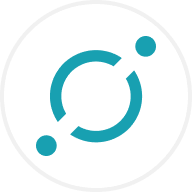MetisDAO (METIS) è un'organizzazione autonoma decentralizzata (DAO) all'avanguardia che mira a rivoluzionare la collaborazione e a potenziare i singoli soggetti e le organizzazioni nello spazio blockchain. Costruita sulla blockchain Ethereum come soluzione layer 2, Metis fornisce un'infrastruttura completa per la creazione, la scalabilità e la gestione di applicazioni decentralizzate (dApp) e DAO. Il suo utility token nativo, METIS, facilita le transazioni senza soluzione di continuità, incentiva i partecipanti alla rete e alimenta i meccanismi di governance all'interno del suo ecosistema.
Cos’è MetisDAO
Nel panorama in continua evoluzione della tecnologia blockchain, le DAO hanno guadagnato una posizione significativa. Esse mirano a rivoluzionare i sistemi tradizionali consentendo un processo decisionale decentralizzato e una governance comunitaria. Tra queste tecnologie emergenti, MetisDAO si distingue come una piattaforma promettente che consente a individui e organizzazioni di collaborare in modo decentralizzato.
Il team di MetisDAO
Dietro lo sviluppo di MetisDAO c'è un team talentuoso e diversificato di appassionati di blockchain e imprenditori. Guidato dall'amministratore delegato Elena Sinelnikova, fondatrice di Cryptochicks, il team riunisce competenze nella tecnologia blockchain, nei sistemi decentralizzati e nella creazione di comunità. Il team è guidato dall’obbiettivo di creare un ecosistema inclusivo ed efficiente che permetta ai partecipanti di collaborare e creare valore collettivamente.
Funzionamento di Metis
MetisDAO fornisce un'infrastruttura completa che consente agli utenti di creare, scalare e gestire facilmente dApp e DAO. MetisDAO offre strumenti e servizi affidabili, tra cui un sistema di identità decentralizzato, meccanismi di governance e soluzioni di gestione delle risorse.
Token nativo di MetisDAO: METIS
L'ecosistema MetisDAO opera su uno utility token nativo, chiamato METIS. Questo token svolge un ruolo cruciale nel facilitare le transazioni, incentivare i partecipanti alla rete e alimentare i meccanismi di governance all'interno dell'ecosistema. In quanto utility token, Metis alimenta le operazioni delle dApp e delle DAO costruite sulla piattaforma MetisDAO.
Tokenomics di METIS
Metis ha una struttura tokenomica ben definita, progettata per garantire la stabilità e promuovere la crescita dell'ecosistema. L'offerta totale di token METIS è attualmente di 5.410.000 token, con 4.466.402 in circolazione.
Una parte dell'offerta di token viene assegnata per incentivare gli early adopters, i contributori e la comunità. Questa assegnazione incoraggia la partecipazione attiva e il contributo all'ecosistema MetisDAO.
Come mettere in staking METIS
Lo staking dei token METIS è un aspetto cruciale dell'ecosistema, che consente ai titolari di token di partecipare alla sicurezza della rete e di guadagnare attivamente le ricompense. MetisDAO offre diverse opzioni di staking, tra cui lo staking sulla mainnet o la partecipazione al liquidity mining sugli exchange decentralizzati (DEX) supportati.
Casi d’uso di METIS
METIS vanta molteplici casi d'uso all'interno dell'ecosistema MetisDAO e serve come mezzo di scambio principale per le transazioni all'interno della rete. I token Metis sono utilizzati per pagare le commissioni di transazione, accedere ai servizi e partecipare alle decisioni di governance. Vengono inoltre utilizzati per incentivare gli utenti, gli sviluppatori e i collaboratori, promuovendo l'adozione e la crescita.
Distribuzione del token METIS
La distribuzione dei tokenMETIS è strutturata con cura per garantire equità e sostenibilità a lungo termine.
- Il primo 49,3% dei token METIS è stato coniato nel 2021 per il cold launch, il team, i consulenti, gli investitori e lo sviluppo dell'ecosistema e della comunità.
- Il 4,86% per i benefici della comunità, compreso il mining
- 10% per il mining dei Rangers nelle prime fasi di sviluppo
- Il 3% per lo sviluppo della comunità nell'imminente Discovery Age
- Il 32,84% per il mining legato alle transazioni nell'imminente Discovery Age
Il promettente futuro di MetisDAO
MetisDAO è una piattaforma innovativa che promuove la collaborazione decentralizzata e consente a individui e organizzazioni di costruire e scalare le proprie applicazioni decentralizzate e DAO. Con una solida infrastruttura, una comunità impegnata e una token economy ben progettata, MetisDAO è pronta a plasmare il futuro della governance decentralizzata e a contribuire alla crescita dell'ecosistema blockchain.

















